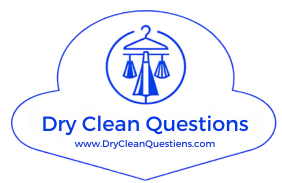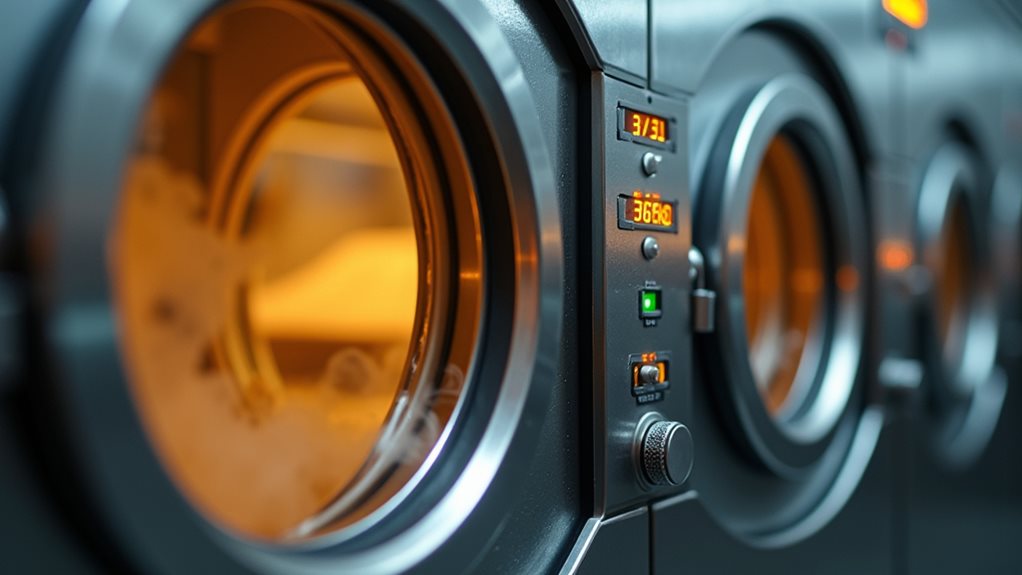You’ll find that dry cleaning operates at surprisingly cool temperatures between 68°F and 86°F during the cleaning phase, which is actually cooler than the warm water cycle on your home washing machine. This gentle approach protects your delicate fabrics while specialized solvents work their magic through chemistry rather than heat. The drying phase does ramp up to around 140°F to evaporate solvents completely, and pressing temperatures can reach 176°F to 248°F for that crisp finish you love. Understanding these temperature variations will help you appreciate why your favorite silk blouse emerges unscathed.
Temperature Ranges in Professional Dry Cleaning Operations
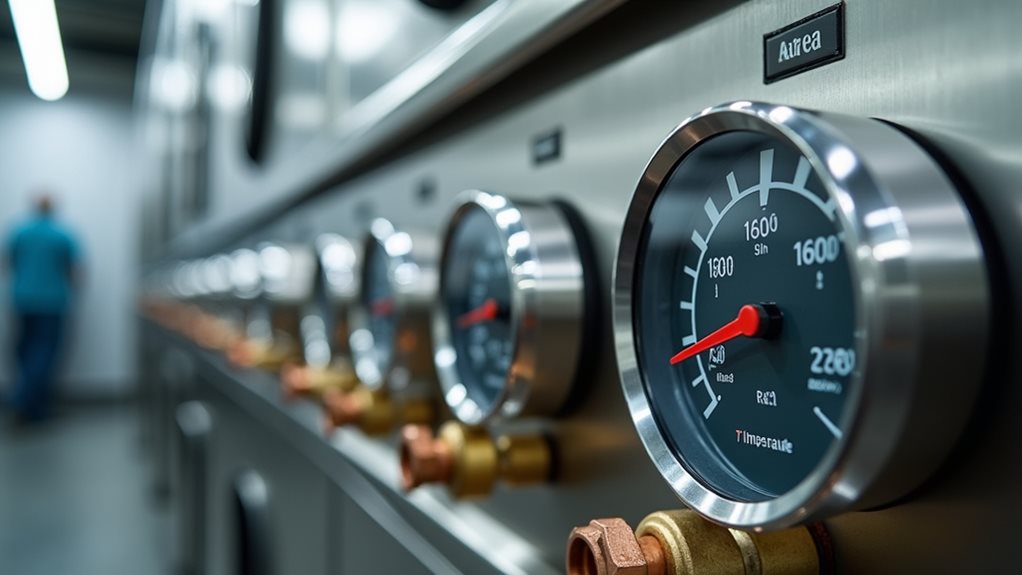
When I first stepped into a professional dry cleaning facility, I was surprised to discover that the cleaning process operates at surprisingly gentle temperatures, typically ranging from just 68°F to 86°F (20°C to 30°C), which is actually cooler than the warm water cycle you’d use in your home washing machine.
Professional dry cleaning operates at surprisingly gentle temperatures of just 68°F to 86°F, cooler than your home washing machine’s warm cycle.
These moderate solvent temperatures protect delicate fabrics while still delivering impressive cleaning performance on stubborn oil-based stains.
What really amazed me was learning that cleaning without high temperatures doesn’t compromise effectiveness – specialized solvents work their magic at these lower ranges, addressing environmental concerns while maintaining quality.
However, the drying process tells a different story, with temperatures reaching 140°F to evaporate solvents completely, proving that professional dry cleaning strategically varies heat levels throughout each phase.
This temperature-controlled approach is especially crucial for structured garments like suits and formal wear, where maintaining the original shape and preventing damage is paramount to preserving the investment in quality clothing.
How Solvent Temperature Affects Fabric Care and Cleaning Performance
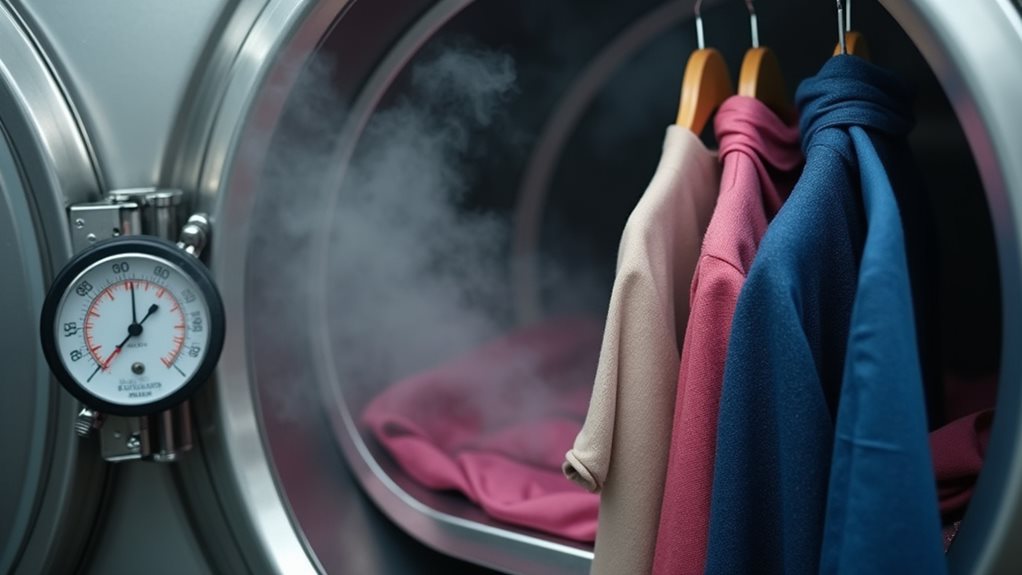
Although you might assume that cranking up the heat would blast away stubborn stains more effectively, the reality of solvent temperature in dry cleaning operates on completely different principles that’ll change how you think about fabric care forever.
When you maintain that sweet spot around 30°C, you’re protecting delicate fabrics while guaranteeing the dry-cleaning process delivers maximum cleaning power without causing color bleeding or fabric distortion.
Here’s what’s fascinating: effective cleaning happens through mechanical friction combined with specialized solvents, not scorching temperatures.
Even the toughest stains can be removed at these controlled temperatures, proving that cleaning performance relies on chemistry and movement rather than heat.
Smart temperature control means preventing damage while achieving professional results every time.
The controlled temperature environment works in conjunction with solvent extraction and drying phases to ensure garments maintain their structural integrity throughout the entire cleaning cycle.
Heat Application During the Drying and Pressing Phases
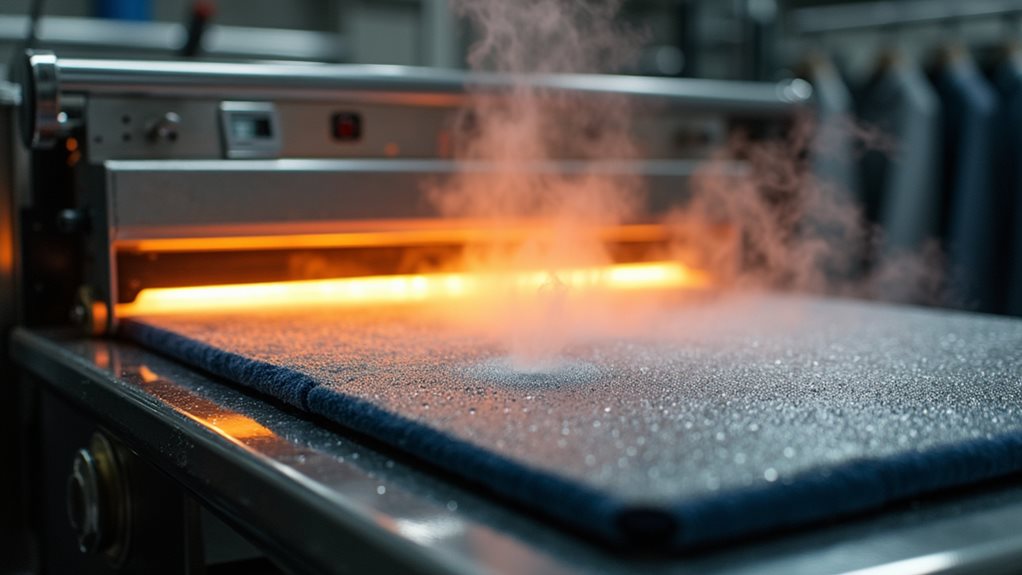
While the solvent cleaning process keeps temperatures delightfully cool, the real heat action begins once your garments move into the drying and pressing phases, where controlled warmth becomes the secret weapon for transforming damp, wrinkled clothes back into crisp perfection.
During the drying phase, warm air circulates at 140°F to 145°F, efficiently encouraging solvent evaporation while providing an unexpected bonus—germ elimination through those high temperatures.
Temperature control becomes absolutely vital here, especially when you’re dealing with delicate fabrics that can’t handle aggressive heat.
The pressing phase cranks things up to 176°F-248°F, using steam to relax fibers without damage. Your specialized solvents need these precise temperatures for ideal extraction, making this entire dry cleaning process a carefully choreographed dance between science and artistry.
This careful temperature management ensures that delicate fabrics and structured garments receive the proper care they need throughout the entire cleaning process.
The Role of Temperature in Different Dry Cleaning Solvents
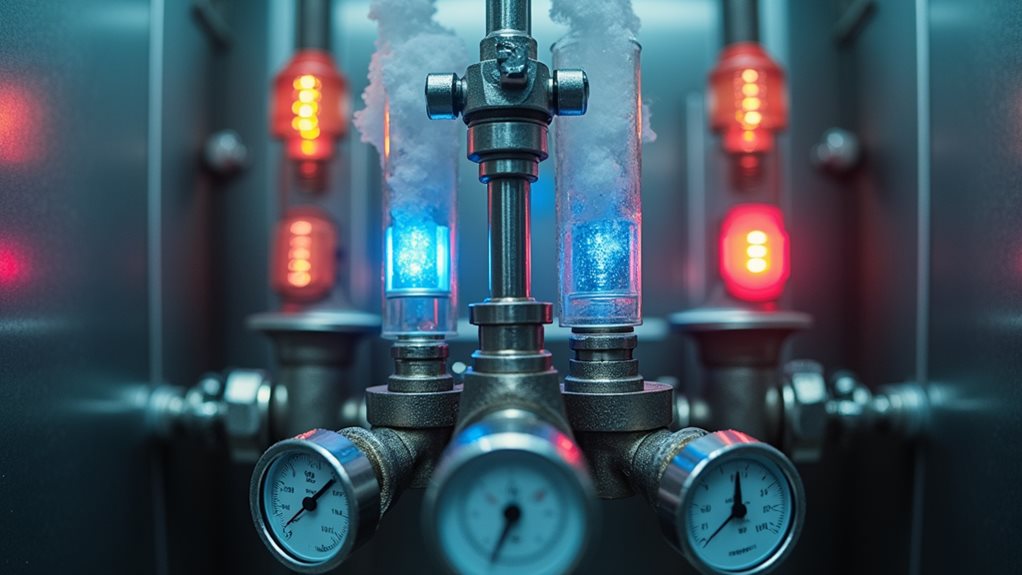
Since different solvents behave like unique personalities under heat, understanding their individual temperature preferences becomes your key to protecting everything from your grandmother’s vintage silk blouse to that expensive wool coat you splurged on last winter.
PERC, the workhorse of dry cleaning solvents, thrives at low temperatures around 30°C, making it perfect for delicate fabrics that would otherwise throw a tantrum under heat 😅.
Meanwhile, liquid CO2 maintains similarly gentle temperatures, offering eco-friendly alternatives for environmentally conscious folks who want effective cleaning processes without the guilt.
GreenEarth’s silicone-based solutions excel at gentle cleaning while tackling stubborn stains, proving that proper temperature control in any solvent in dry cleaning isn’t just science—it’s an art form that preserves your wardrobe’s longevity.
Hydrocarbon-based cleaners represent another alternative solvent option that operates effectively at controlled temperatures while providing excellent cleaning power for removing oils and greases from fabrics.
Comparing Heat Levels: Dry Cleaning Vs Traditional Water Washing
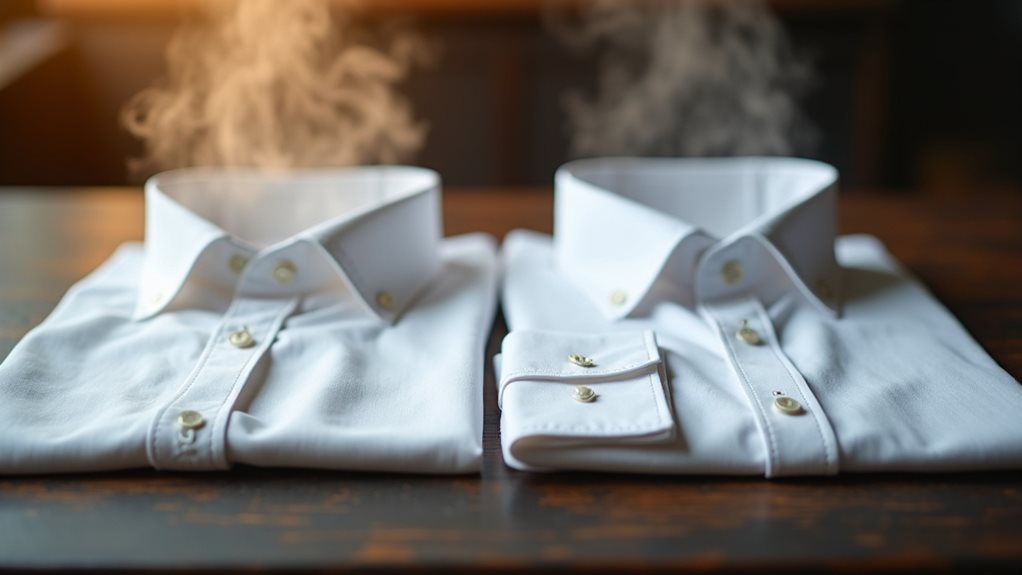
When you’re standing in your laundry room debating whether that silk dress deserves the gentle touch of professional cleaning or can survive another spin in your trusty washing machine, the temperature difference between these two methods becomes the deciding factor that could save or doom your favorite garments.
Here’s the reality: dry cleaning operates at remarkably cooler temperatures during the cleaning process, typically 68-86°F, while traditional washing throws your delicate garments into 104-140°F water that’s honestly too aggressive for sensitive fabrics.
The controlled heat levels in professional cleaning prevent the dreaded shrinking and color bleeding that water washing often causes, maintaining fabric integrity while achieving superior stain removal—though temperatures do rise to 140-145°F during drying to evaporate solvents effectively.
Understanding these temperature differences becomes crucial when considering whether to invest in dry cleaning equipment for your own business, as the specialized machinery required to maintain these precise heat controls represents a significant operational consideration.
